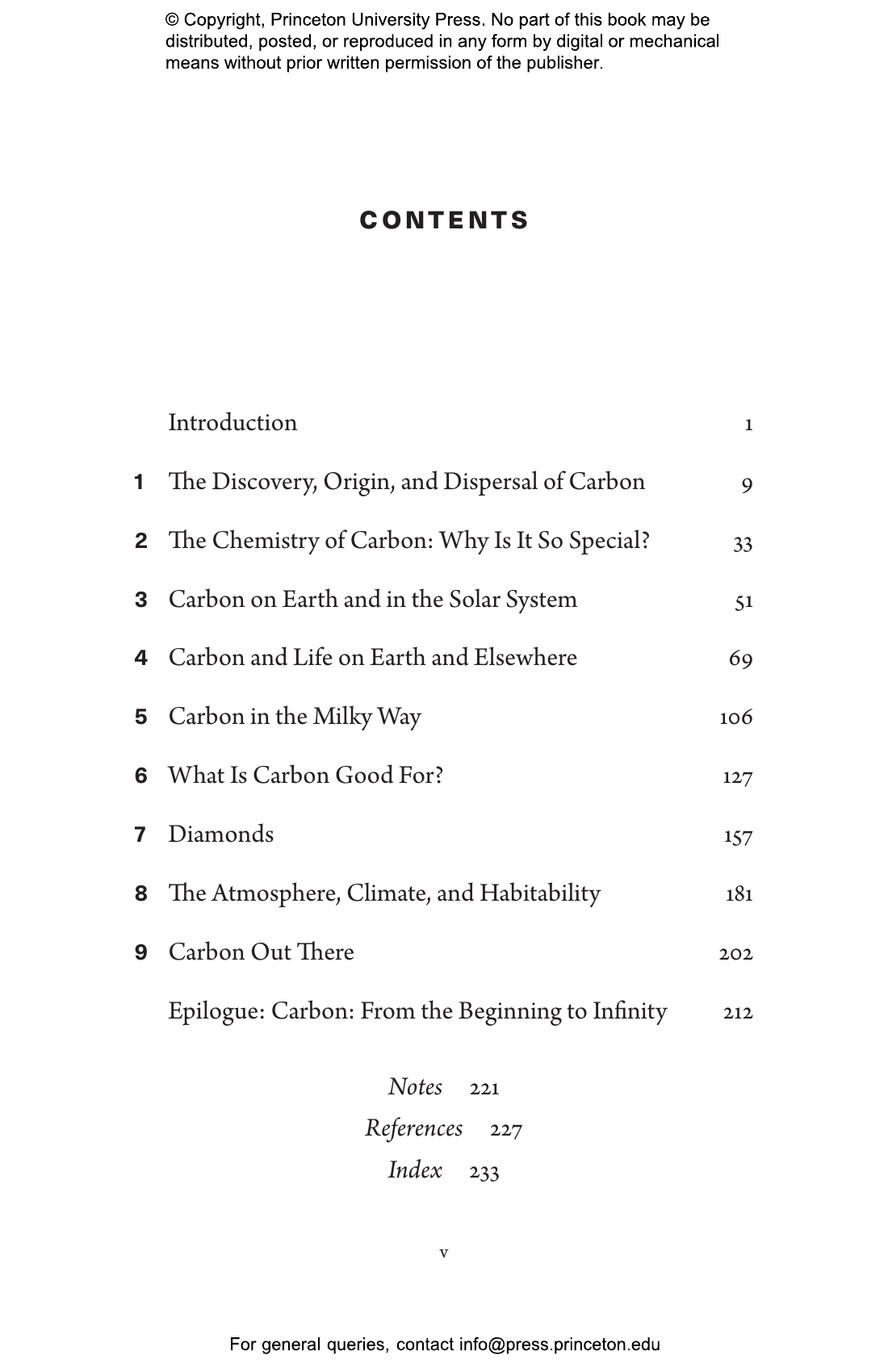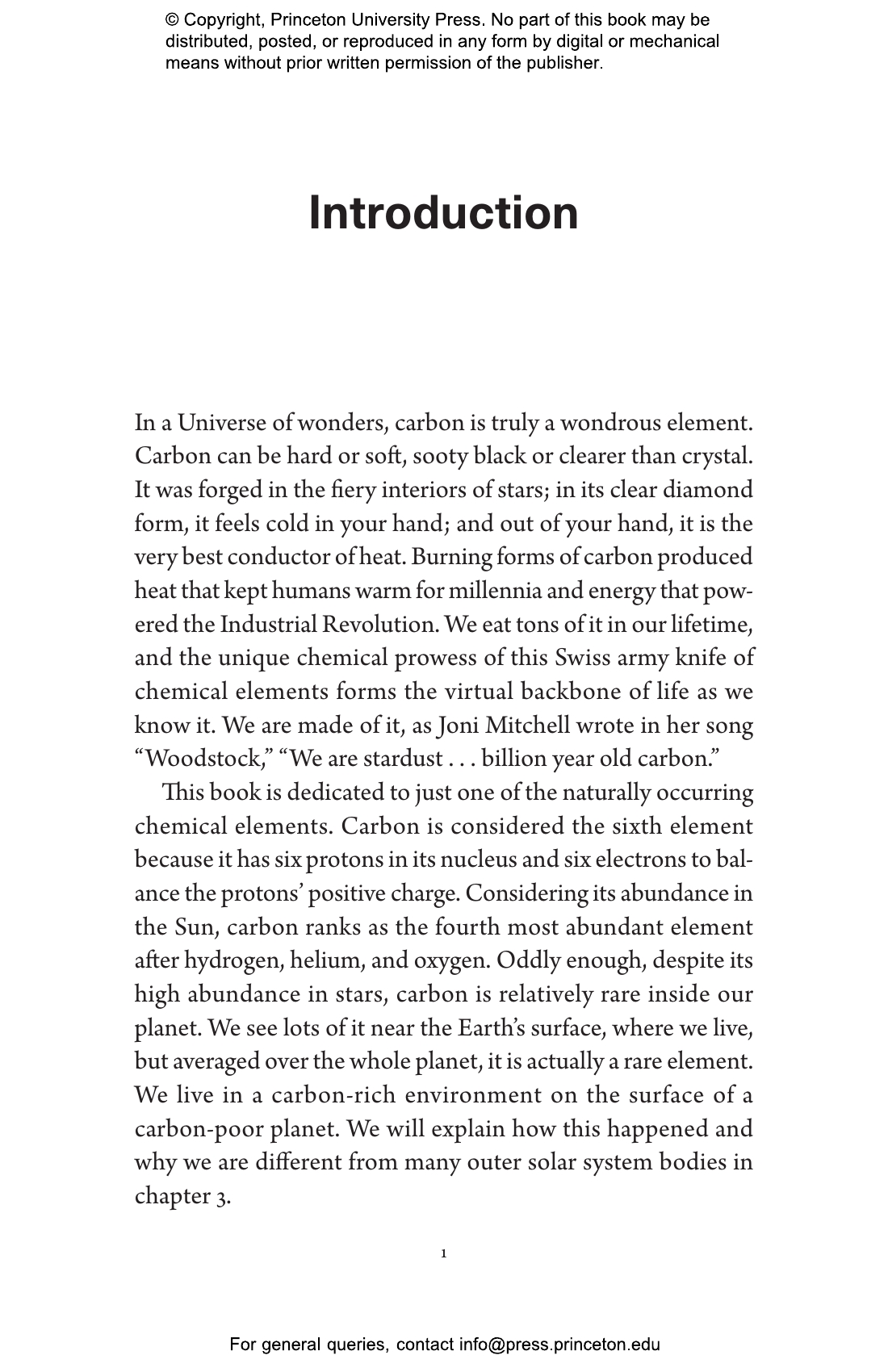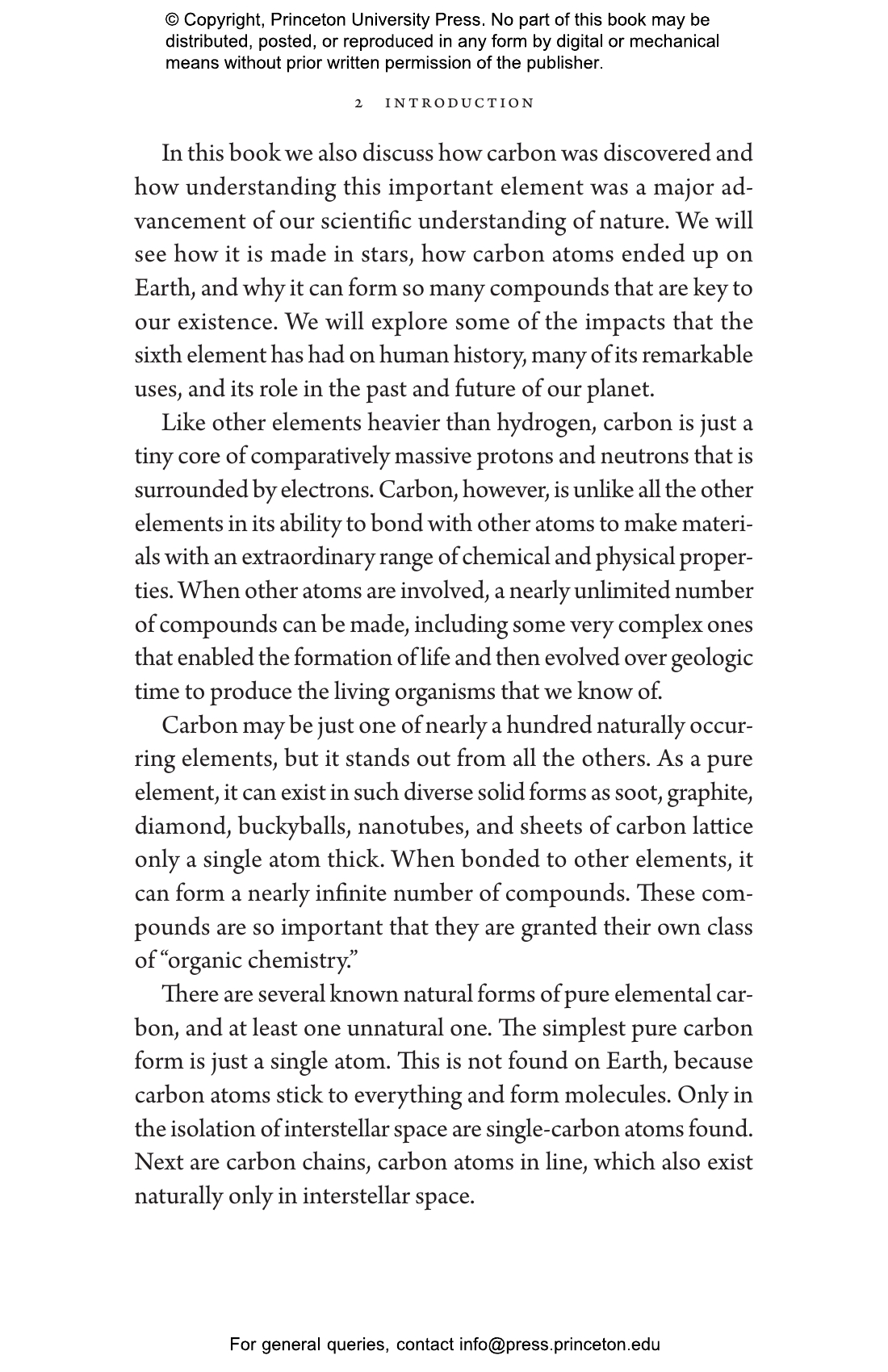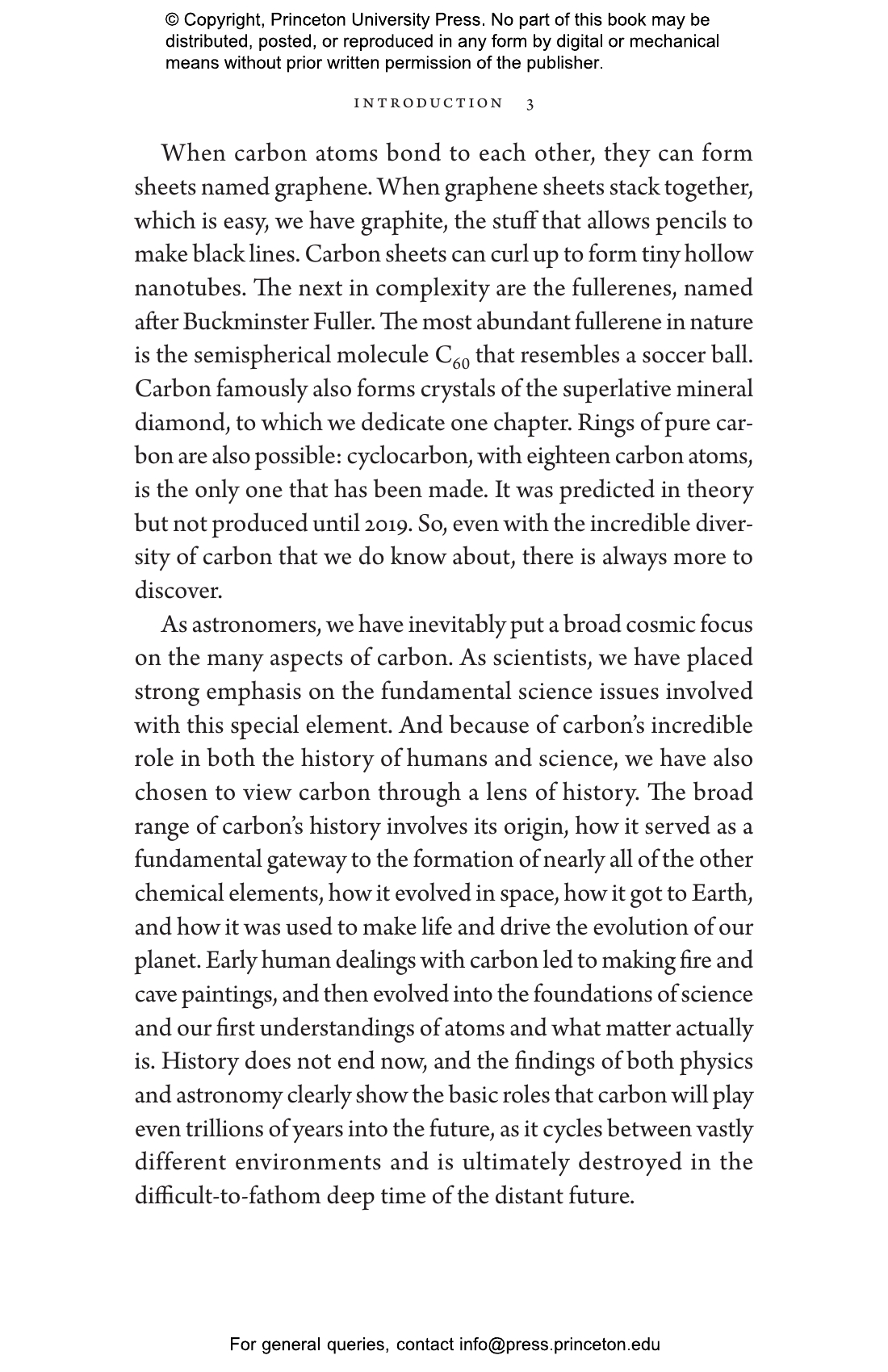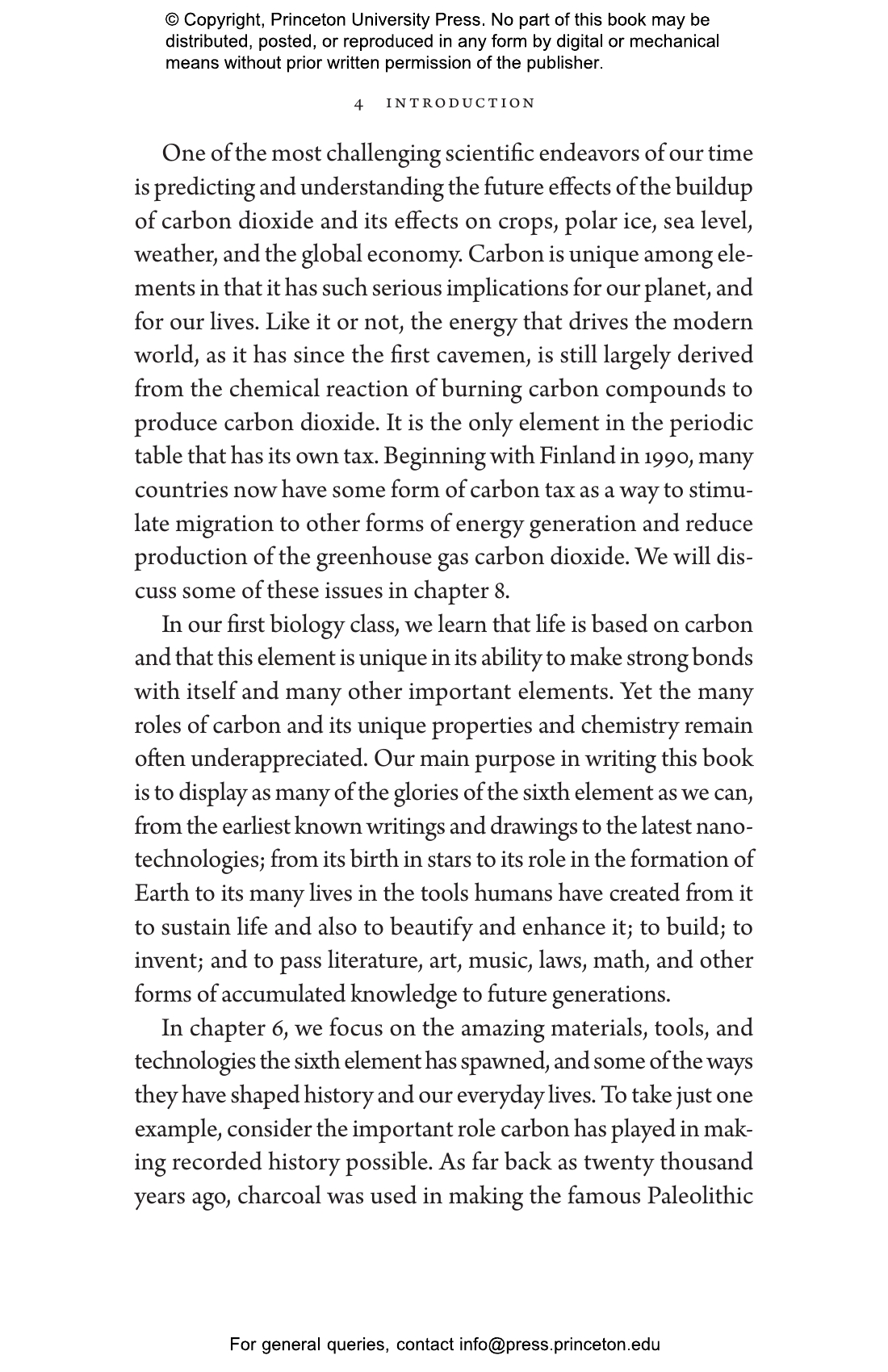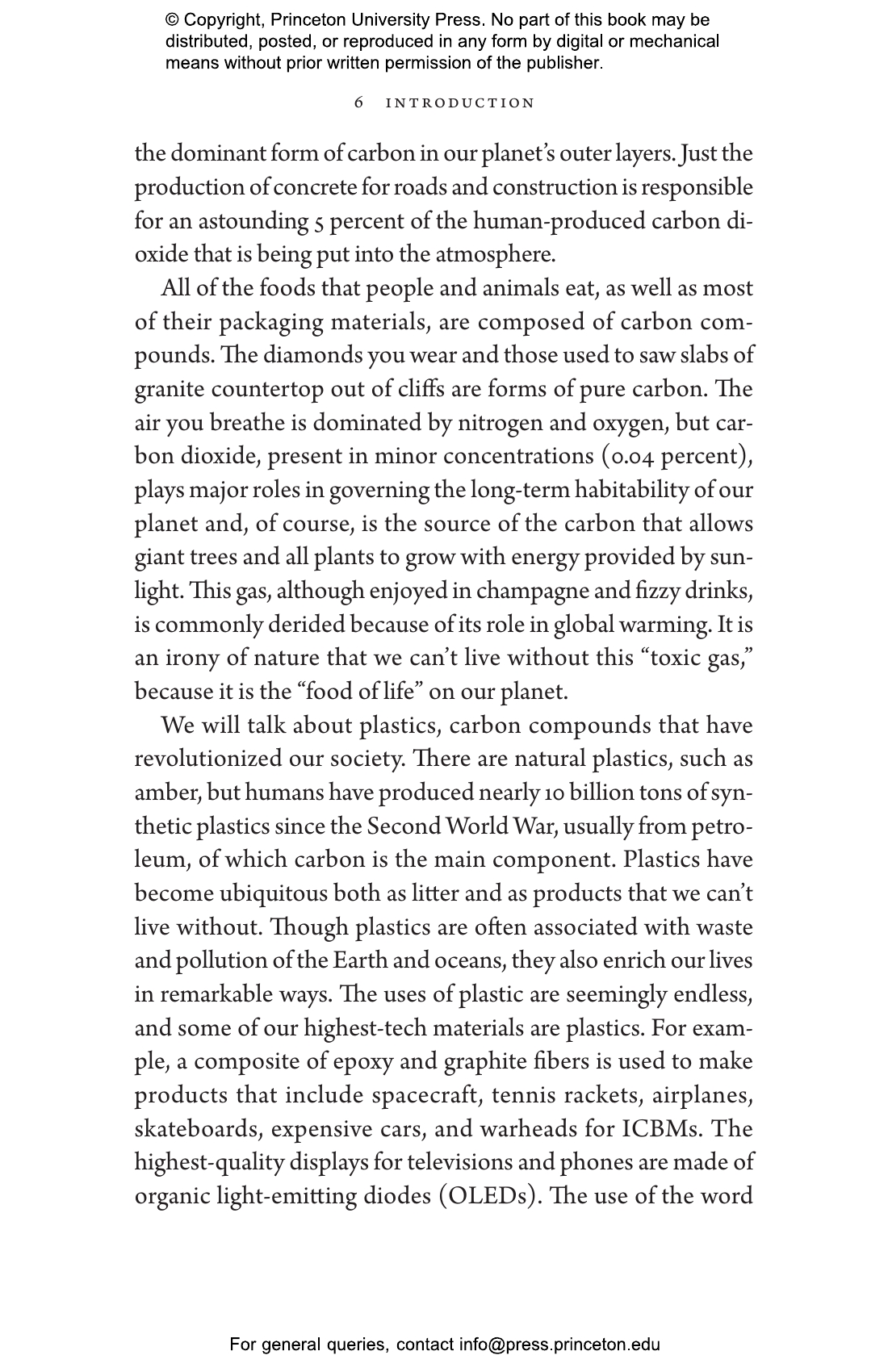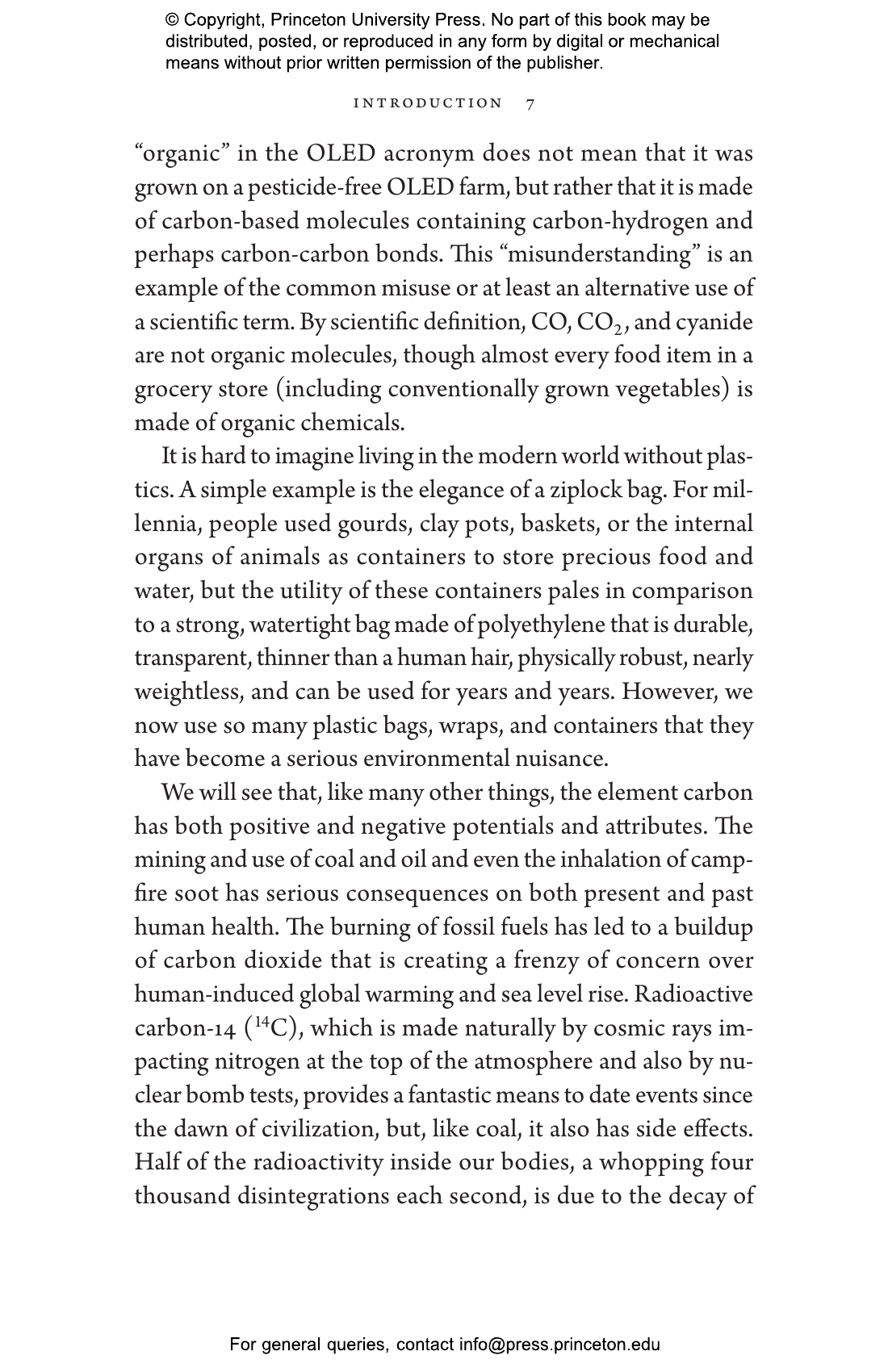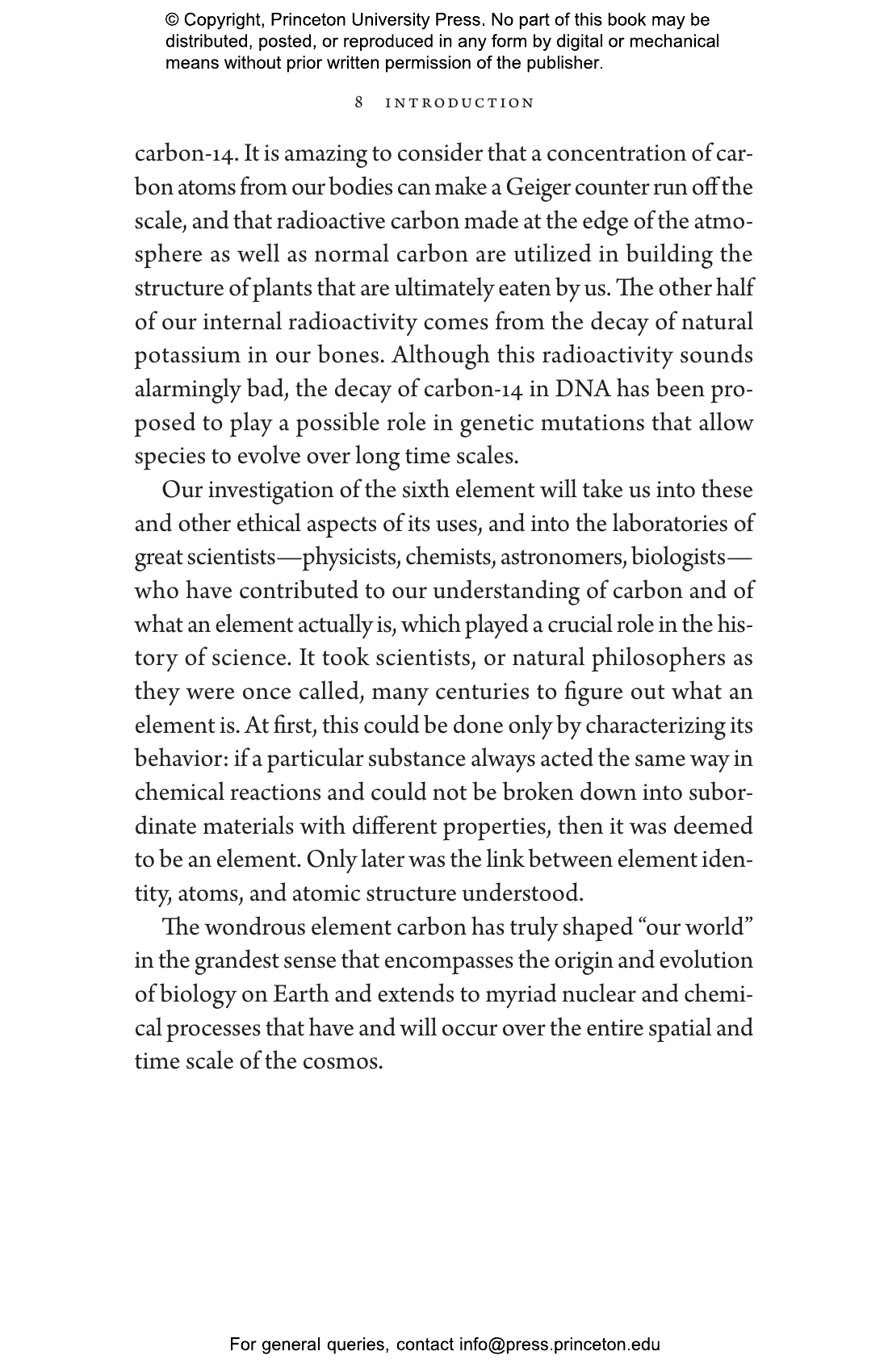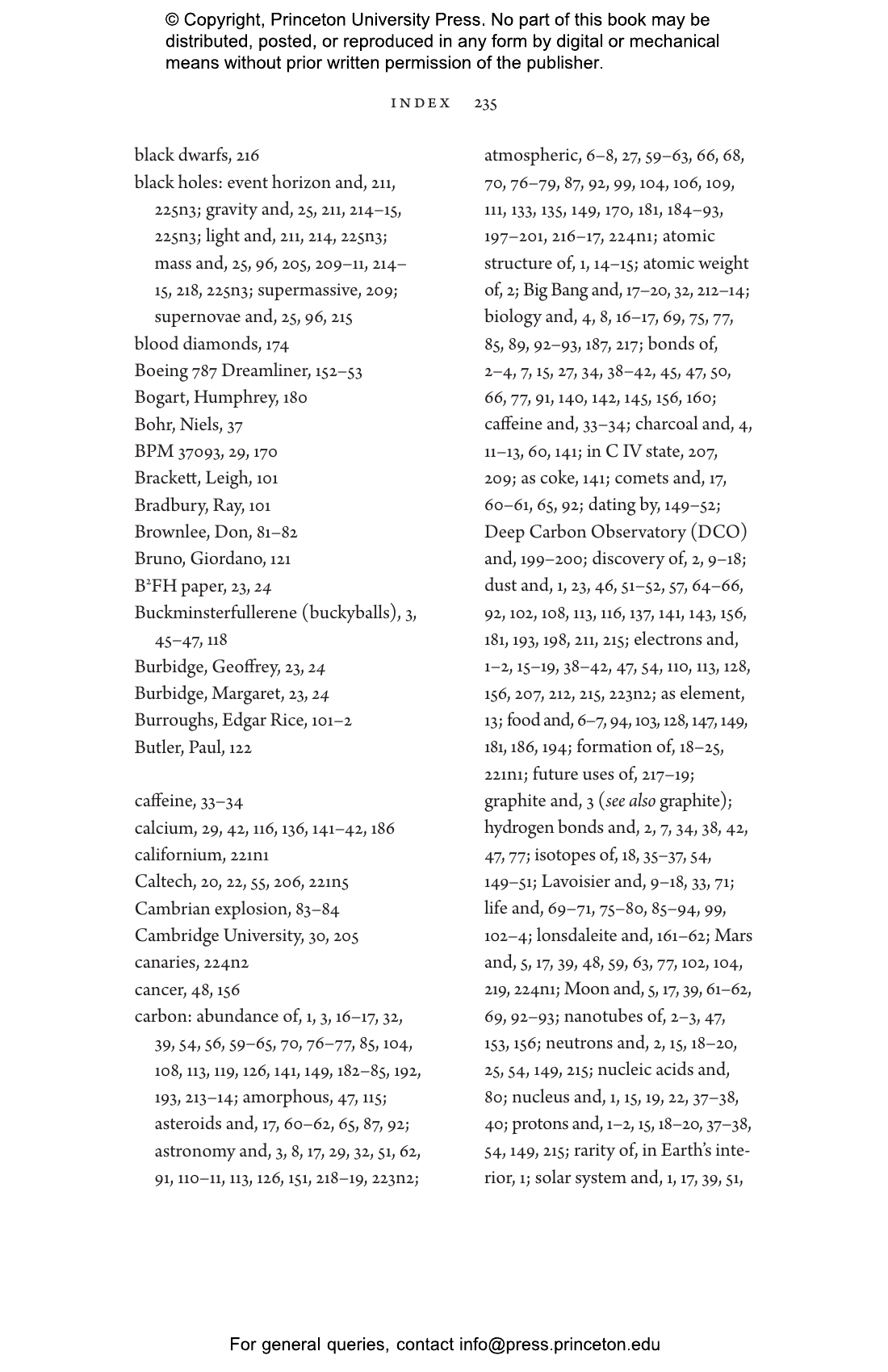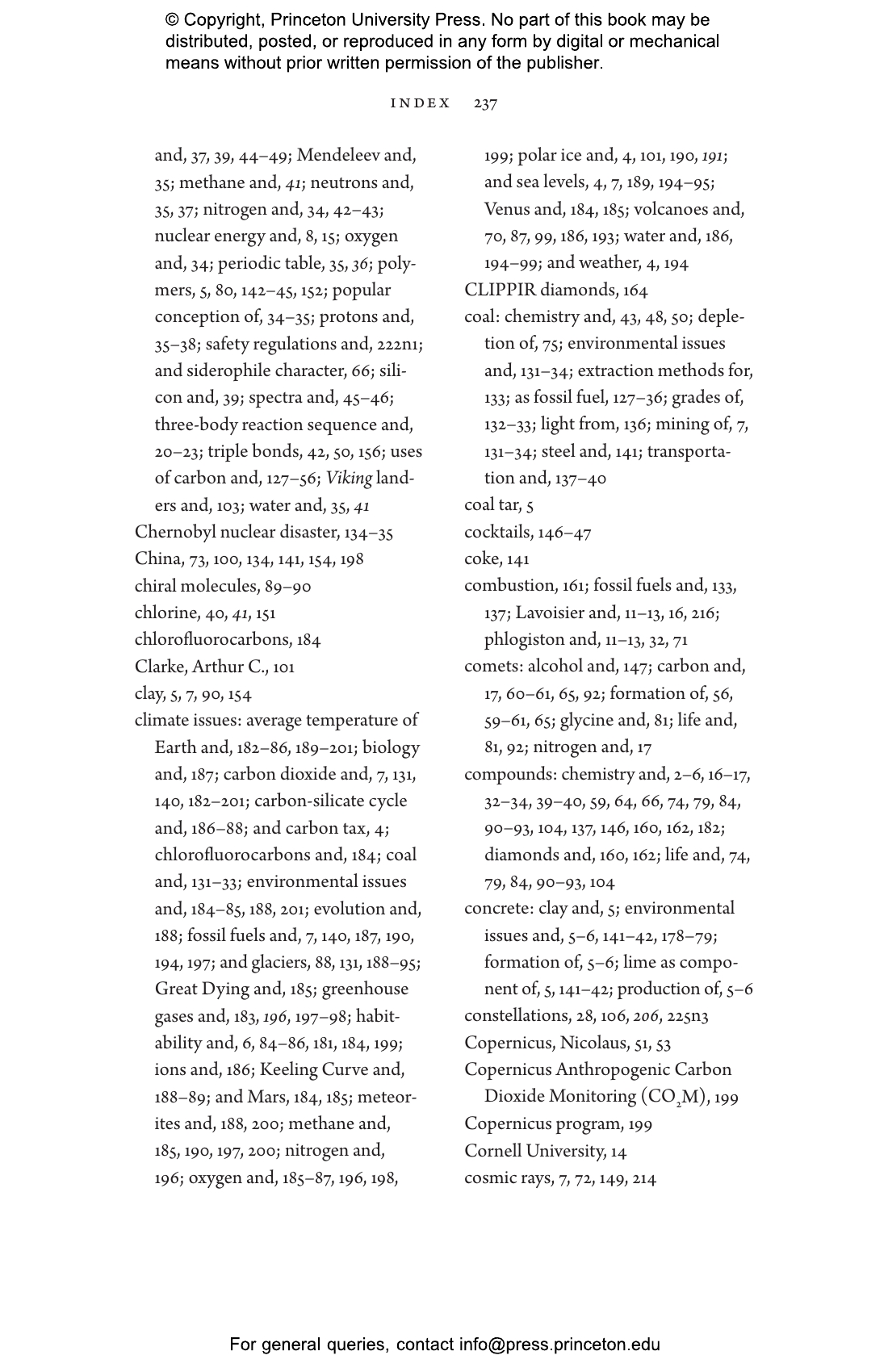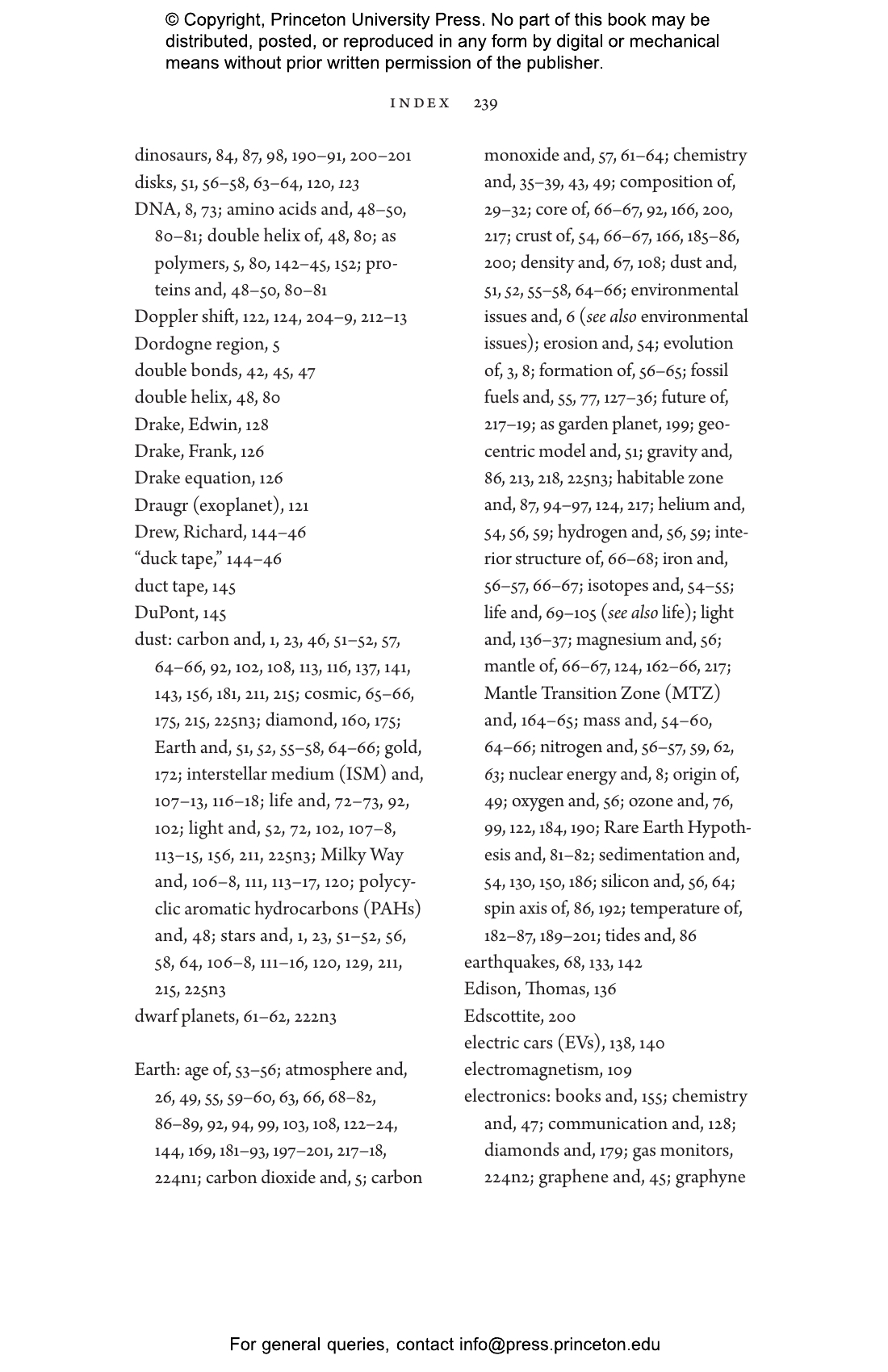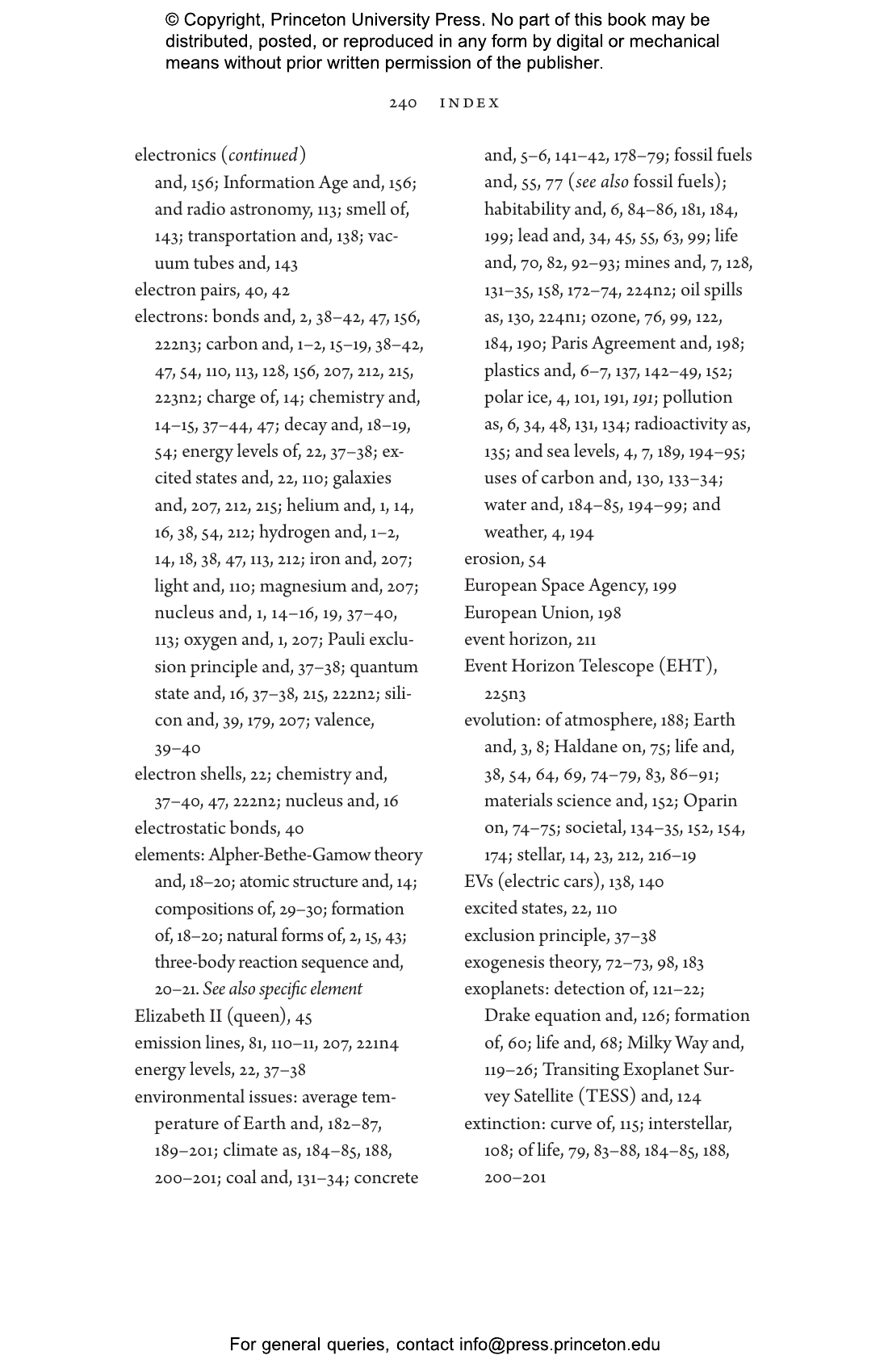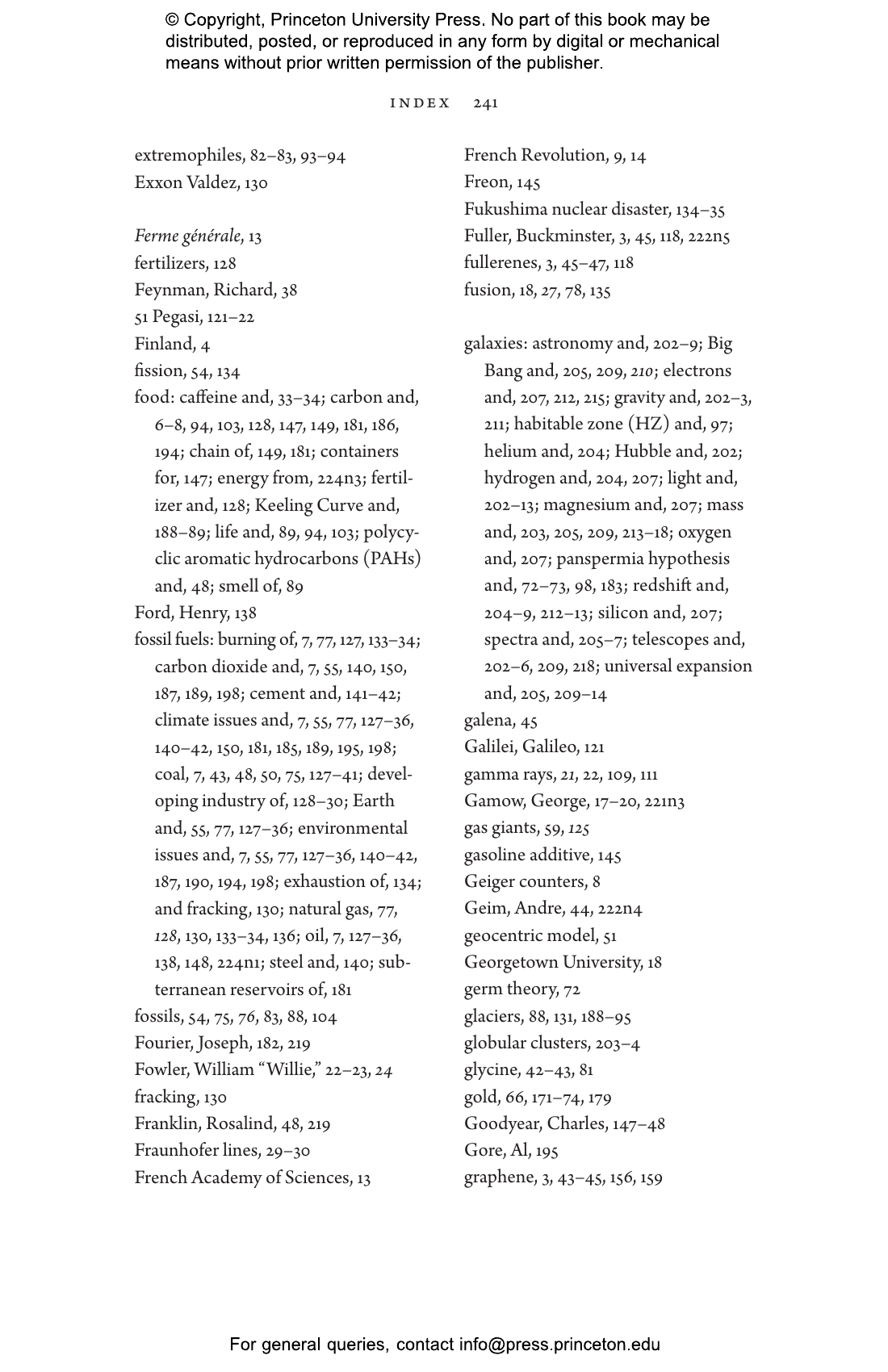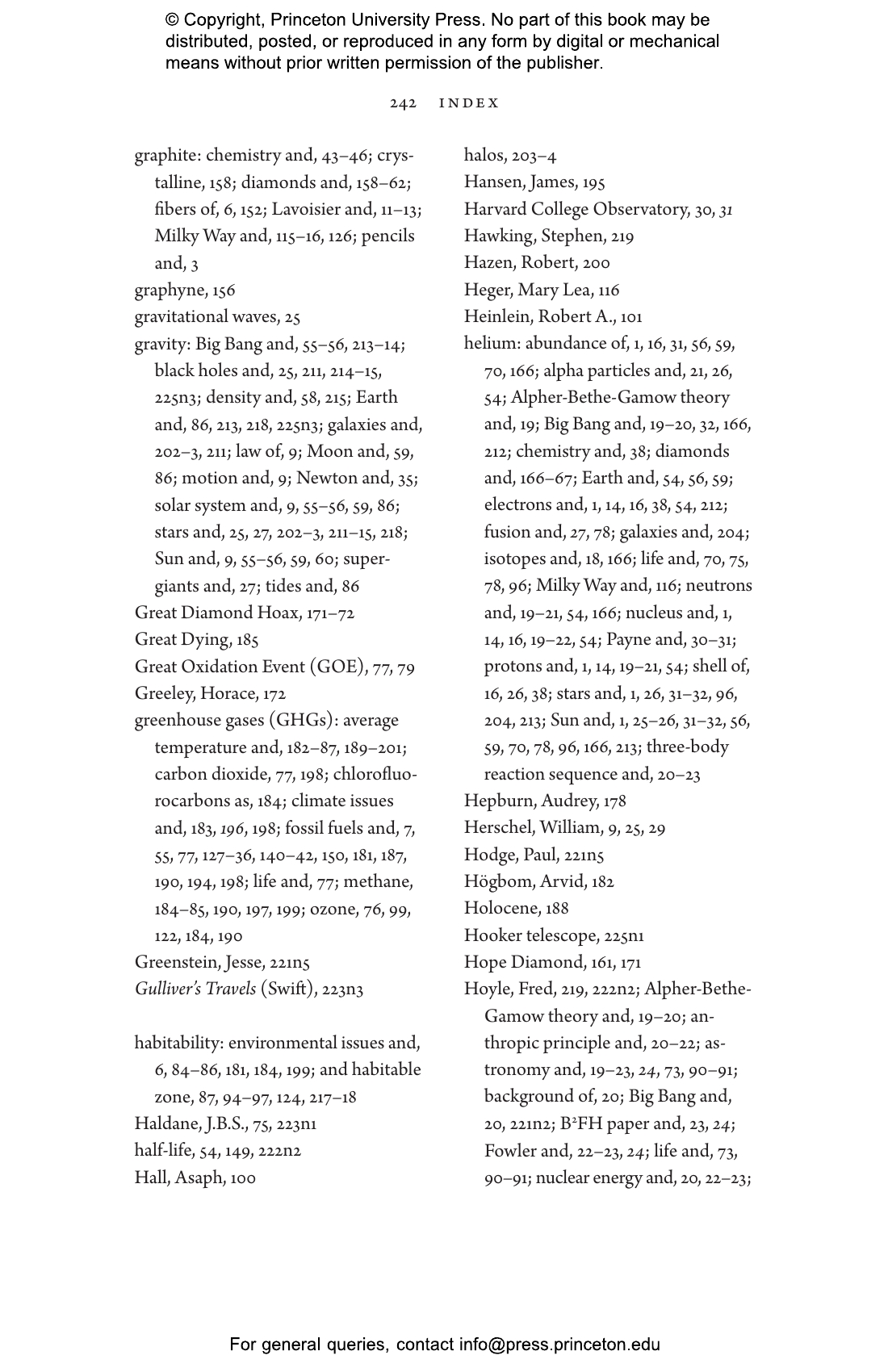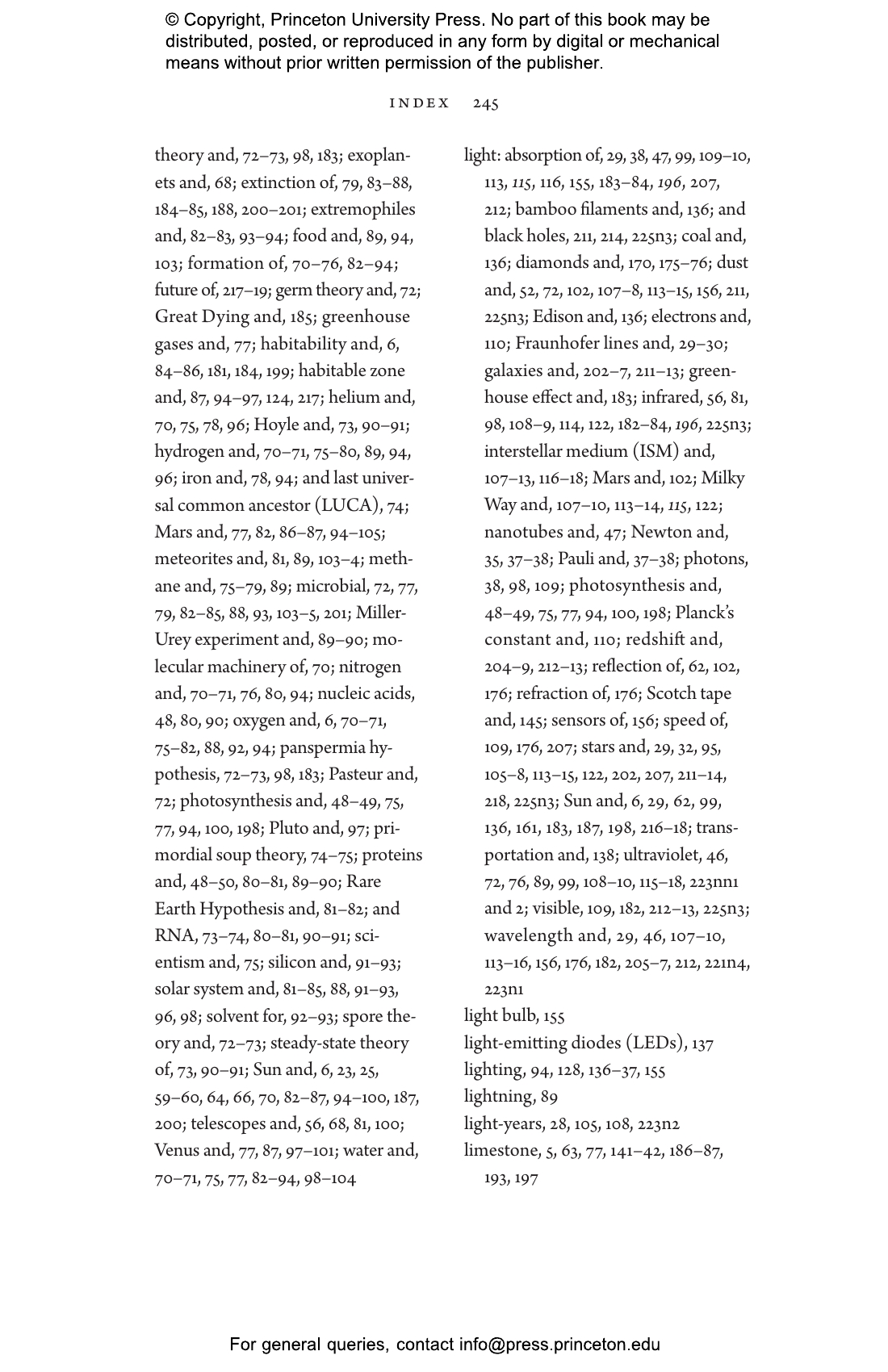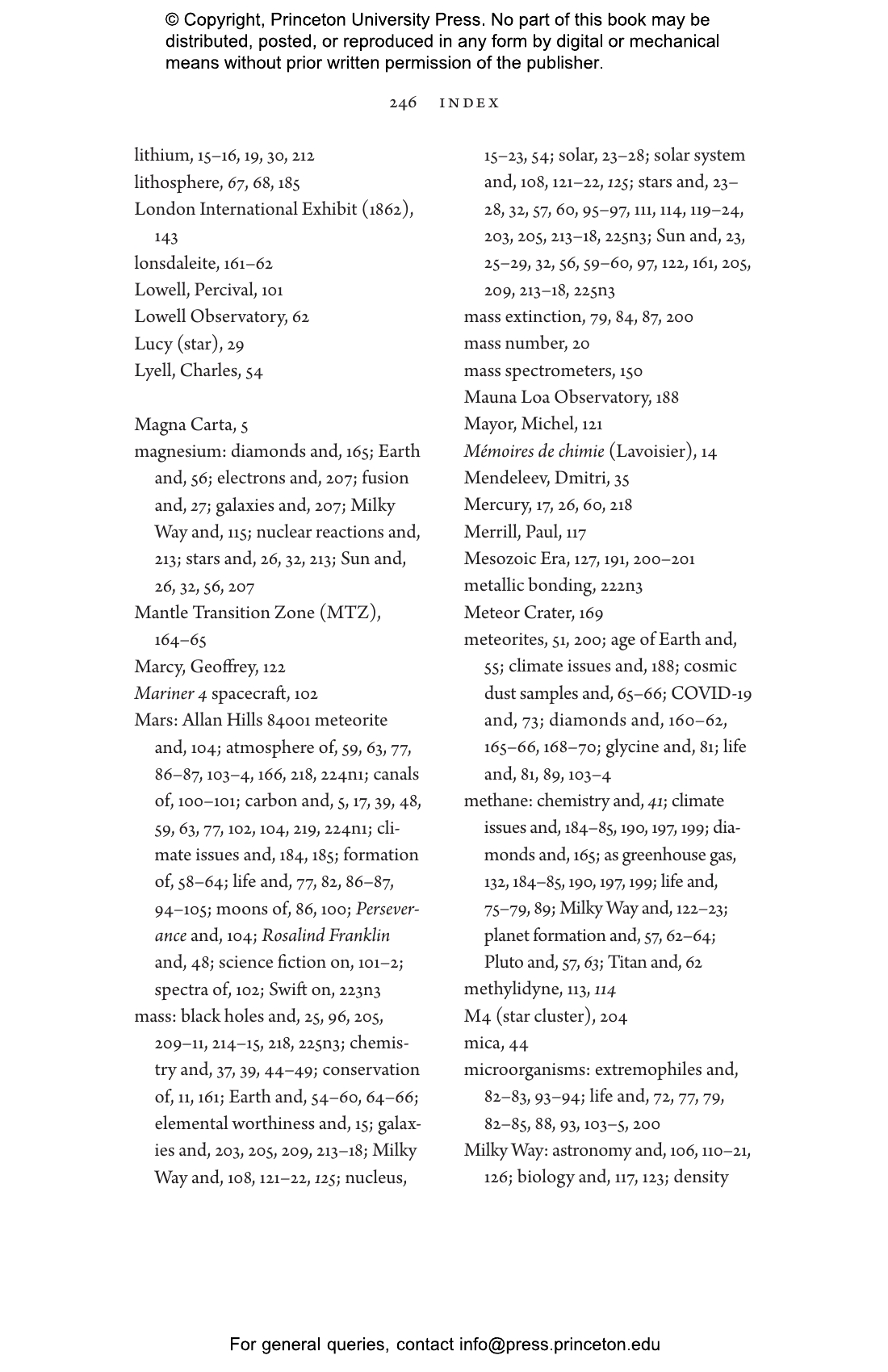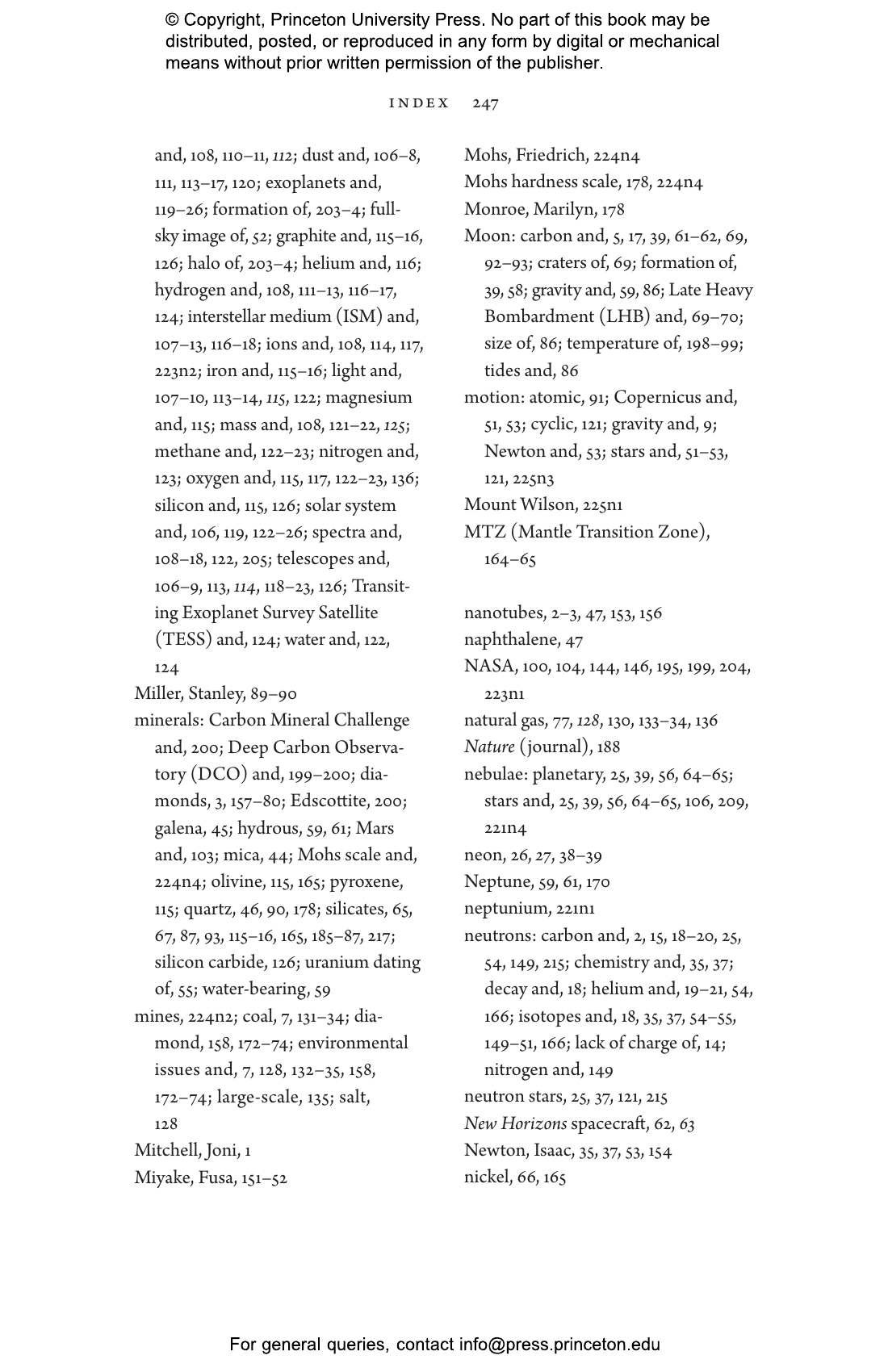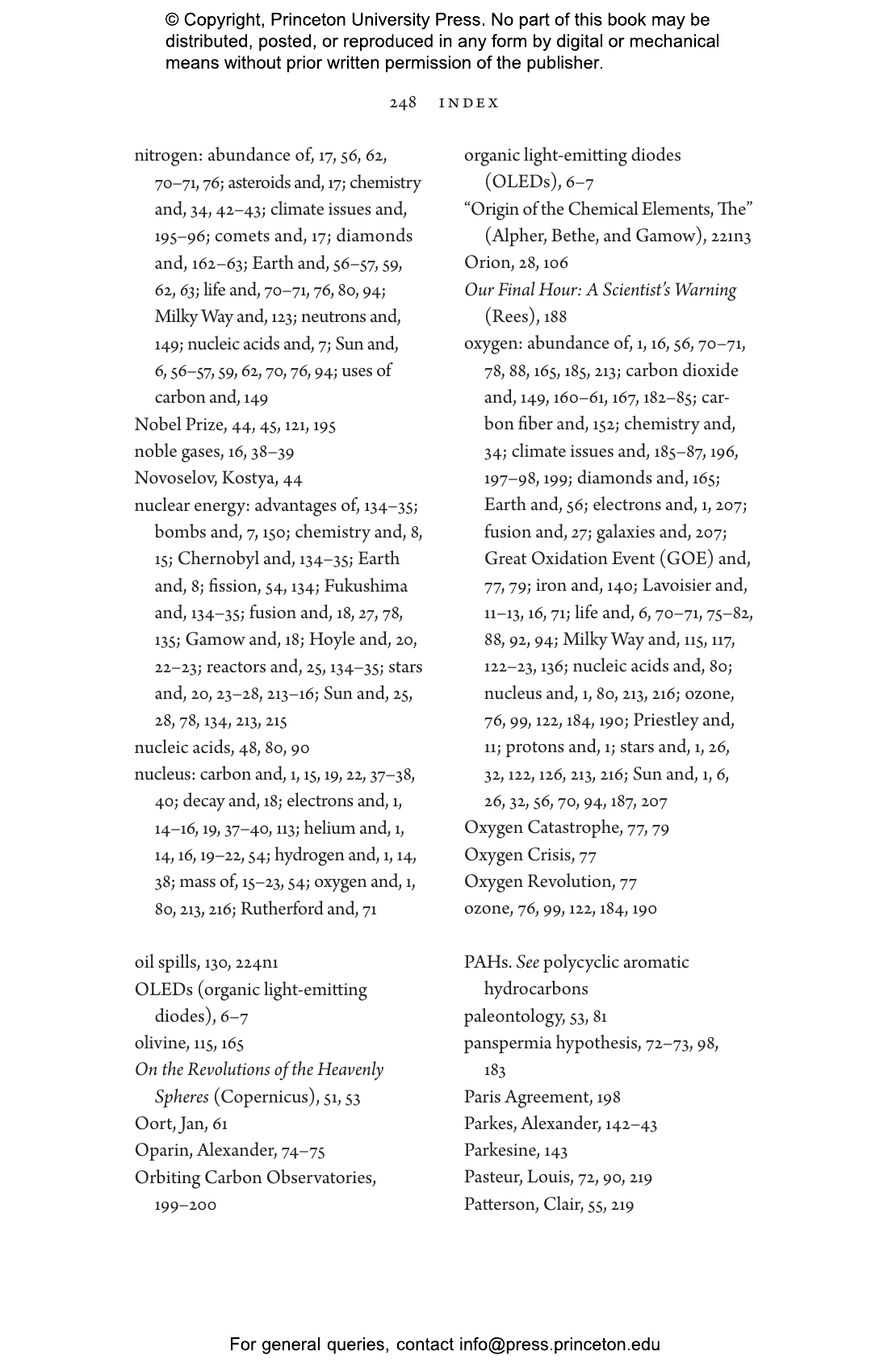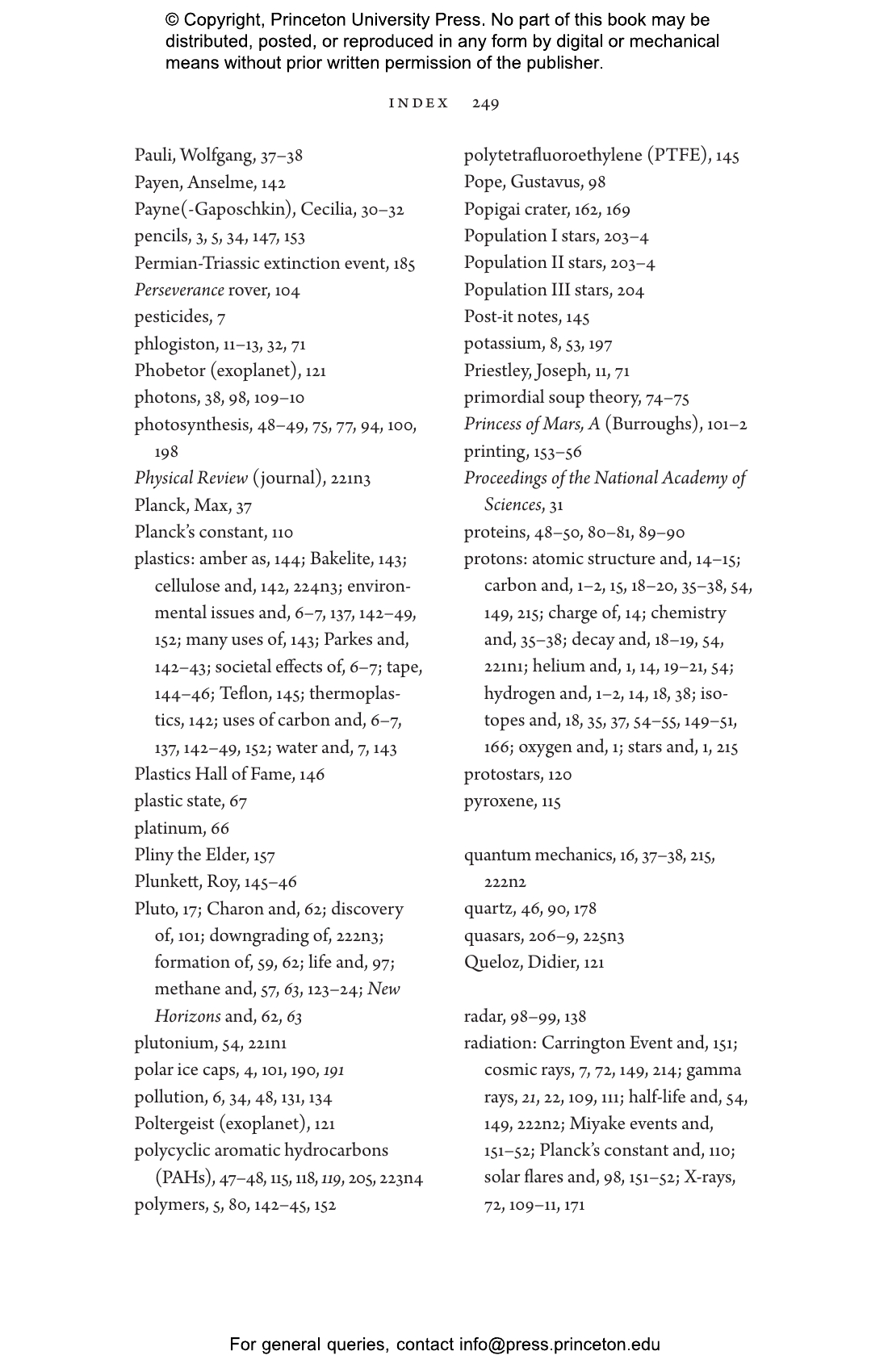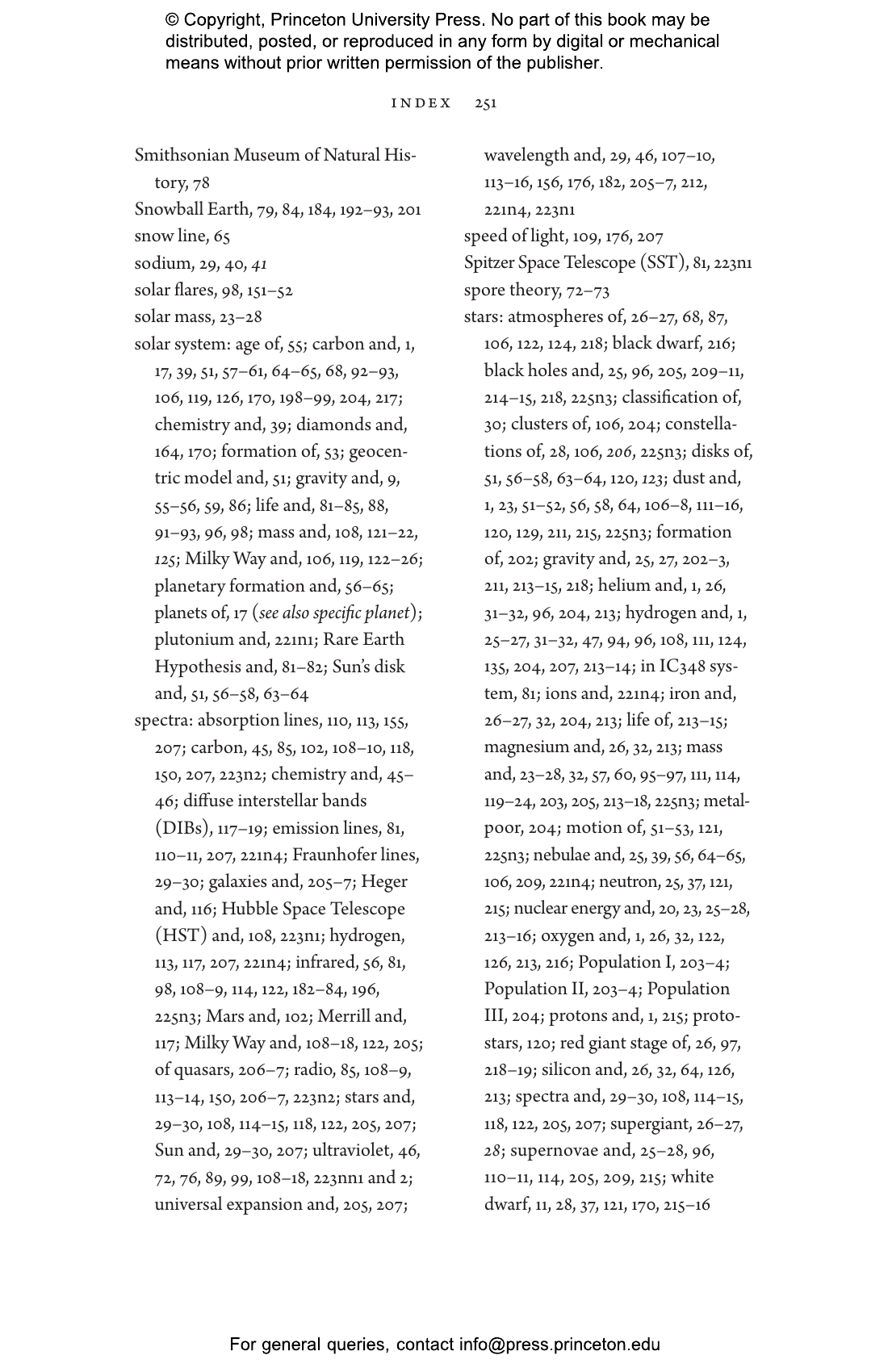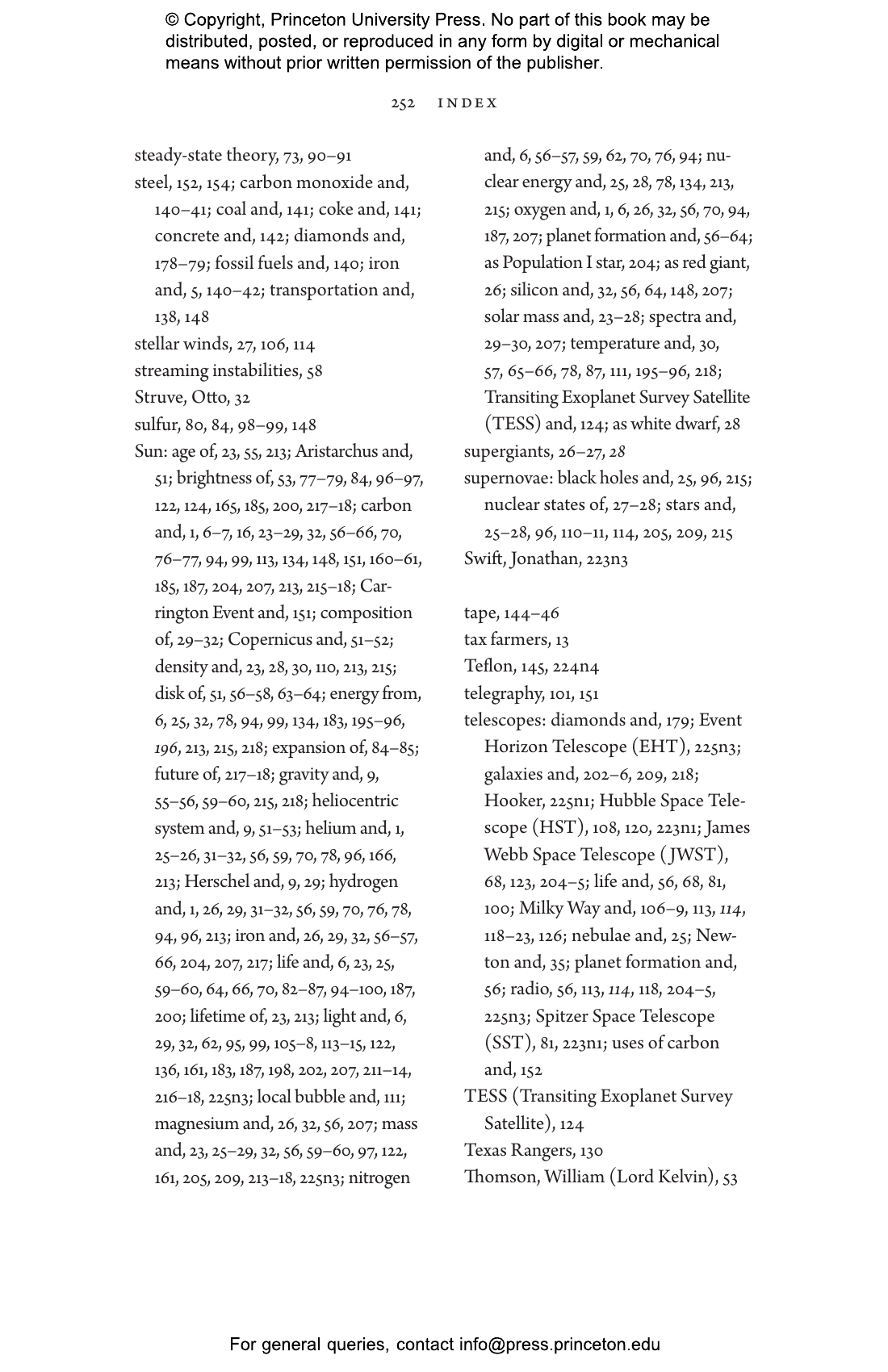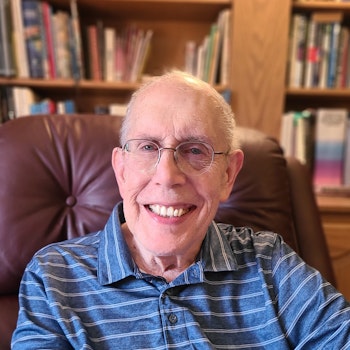When we think of carbon, we might first think of a simple element near the top of the periodic table: symbol C, atomic number 6. Alternatively, we might think of something more tangible—a sooty piece of coal or a sparkling diamond, both made of carbon. Or, as Earth’s temperature continues to rise alarmingly, we might think of the role carbon plays in climate change. Yet carbon’s story begins long ago, far from earthly concerns. In The Sixth Element, astronomers Theodore Snow and Don Brownlee tell the story of carbon from a cosmic perspective—how it was born in the fiery furnaces of stars, what special chemical and physical properties it has, and how it forms the chemical backbone of the planets and all life as we know it. Foundational to every part of our lives, from our bodies to the food, tools, and atmosphere that sustain our existence, carbon is arguably humankind’s most important element.
Snow and Brownlee offer readers the ideal introduction to the starry element that made our world possible and shapes our lives. They first discuss carbon’s origin, discovery, and unique ability to bond with other elements and form countless molecules. Next, they reveal carbon’s essential role in the chemical evolution of the universe and the formation and evolution of galaxies, stars, planets, and life, and then, more generally, its technological uses and its influence on Earth’s climate. Bringing readers on a historical, scientific, and cross-disciplinary journey, The Sixth Element illuminates the cosmic wonder that is carbon.
Awards and Recognition
- A Choice Outstanding Academic Title of the Year
Theodore P. Snow is professor emeritus at the Center for Astrophysics and Space Astronomy at the University of Colorado Boulder. Over the course of his career, he has worked on two orbital telescopes, including the Hubble Space Telescope, built experiments for rocket and satellite observations, and studied chemical reactions important in interstellar space. He is the author of the award-winning textbook The Dynamic Universe. Don Brownlee is professor emeritus of astronomy at the University of Washington. He has been involved in spacecraft, rocket, high-altitude balloon, and U-2 airplane experiments since he was a graduate student, and he was the principal investigator in charge of the NASA Stardust mission that collected samples from a comet and returned them to Earth. He is the coauthor of Rare Earth and Life and Death of Planet Earth.
"Meticulously researched and comprehensive in scope, the book will be an asset to science libraries for decades to come."—Bruce Dorminey, Forbes
"The authors, each an accomplished research astronomer and emeritus university professor, have given us a very informative book for the scientifically attentive reader. It belongs in every science library."—S. P. Maran, Choice
"Snow and Brownlee have filled their narrative with well-told stories . . . [and] factoids of all sorts."—Laurence A. Marschall, Natural History
"[A] very informative book. . . . Highly recommended."—Choice
“A fascinating tour through basic chemistry, the Big Bang, stellar nucleosynthesis, planetary habitability, modern global warming, and more, all bound together by the common thread of the element carbon. No matter your scientific background, you will learn things from this book.”—Jim Kasting, author of How to Find a Habitable Planet
“The Sixth Element takes us on a tour of the element carbon with a breathtaking intellectual scope. Snow and Brownlee have skillfully woven an engaging and accessible course in the basic sciences around a single chemical element.”—Jonathan Lunine, author of Earth: Evolution of a Habitable World
“All the elements are created by nucleosynthetic reactions in the fiery caldrons of stellar interiors and then ejected into the depth of space in the form of atoms, molecules, and dust particles at the end of the star’s lifetime, until they wind up in new stars and their planetary systems. This delightful book portrays this elemental trail from the point of view of carbon and places this key element in the context of its role in our world, our lives, and the inner workings of the universe.”—Alexander Tielens, University of Maryland and Leiden Observatory



